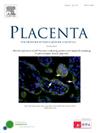Assessing the transplacental passage and breastmilk levels of broccoli sprout-derived sulforaphane
IF 2.5
2区 医学
Q2 DEVELOPMENTAL BIOLOGY
引用次数: 0
Abstract
Introduction
Preeclampsia is characterised by hypertension with maternal end-organ dysfunction and/or fetal growth restriction. Sulforaphane, an antioxidant found in broccoli sprouts, has potential as a future therapeutic. With its ability to attenuate the injurious impacts of endothelial dysfunction in vitro, sulforaphane is uniquely positioned to protect against the harmful effects of preeclampsia. However, the transferability of sulforaphane from mother to fetus/baby remains unknown in humans.
Methods
Uncomplicated pregnant patients (n = 8) scheduled for elective caesarean sections (>37 weeks gestation) provided written and informed consent. A single oral dose of EnduraCell, a broccoli sprout extract (equivalent to 21 mg of sulforaphane), was administered prior to caesarean section. Baseline blood pressure, blood and urine were collected and again at time of operation, alongside umbilical cord blood (vein and artery) and placental samples. 2–4 days post-delivery, a second dose was administered. Two hours later, maternal bloods and breast milk were collected. Samples were processed and analysed by liquid-chromatography mass-spectrometry to measure sulforaphane.
Results
Besides an increase in peripheral diastolic blood pressure on the day of caesarean section (p = 0.028), there were no changes in maternal blood pressure or heart rate after ingestion of EnduraCell. Sulforaphane was found in maternal serum (70.10 ng/ml ± 11.90), umbilical cord blood (vein: 25.18 ng/mL ± 3.11, artery: 18.81 ng/mL ± 2.36), urine (5726.00 ng/mL ± 1175.00), placental tissue (10.99 ng/mg ± 2.11) and breast milk (1.33 ng/mL ± 2.29).
Discussion
Sulforaphane is present in the umbilical cord and breast milk, providing the world's first evidence of sulforaphane maternal-fetal transfer in humans, and opening avenues for future research into relevant fetal implications.
评估经胎盘通过和母乳中的西兰花芽衍生萝卜硫素水平
子痫前期的特点是高血压伴母体终末器官功能障碍和/或胎儿生长受限。萝卜硫素是西兰花芽中发现的一种抗氧化剂,有可能成为未来的治疗药物。凭借其在体外减轻内皮功能障碍的有害影响的能力,萝卜硫素是独特的定位,以防止子痫前期的有害影响。然而,在人类中,萝卜硫素从母亲到胎儿/婴儿的可转移性尚不清楚。方法8例(n = 8)妊娠37周择期剖宫产患者均提供书面知情同意书。在剖宫产前口服一剂EnduraCell,一种西兰花芽提取物(相当于21毫克萝卜硫素)。手术时收集基线血压、血液和尿液,以及脐带血(静脉和动脉)和胎盘样本。分娩后2-4天,给予第二次剂量。两小时后,采集母体血液和母乳。采用液相色谱质谱法对样品进行处理和分析,测定萝卜硫素含量。结果产妇服用EnduraCell后,除剖宫产当日外周舒张压升高(p = 0.028)外,血压和心率无明显变化。孕妇血清(70.10 ng/ml±11.90)、脐带血(静脉:25.18 ng/ml±3.11,动脉:18.81 ng/ml±2.36)、尿液(5726.00 ng/ml±1175.00)、胎盘组织(10.99 ng/mg±2.11)和母乳(1.33 ng/ml±2.29)中均检测到萝卜硫素。萝卜硫素存在于脐带和母乳中,为人类提供了世界上第一个萝卜硫素母胎移植的证据,并为未来有关胎儿影响的研究开辟了道路。
本文章由计算机程序翻译,如有差异,请以英文原文为准。
求助全文
约1分钟内获得全文
求助全文
来源期刊

Placenta
医学-发育生物学
CiteScore
6.30
自引率
10.50%
发文量
391
审稿时长
78 days
期刊介绍:
Placenta publishes high-quality original articles and invited topical reviews on all aspects of human and animal placentation, and the interactions between the mother, the placenta and fetal development. Topics covered include evolution, development, genetics and epigenetics, stem cells, metabolism, transport, immunology, pathology, pharmacology, cell and molecular biology, and developmental programming. The Editors welcome studies on implantation and the endometrium, comparative placentation, the uterine and umbilical circulations, the relationship between fetal and placental development, clinical aspects of altered placental development or function, the placental membranes, the influence of paternal factors on placental development or function, and the assessment of biomarkers of placental disorders.
 求助内容:
求助内容: 应助结果提醒方式:
应助结果提醒方式:


